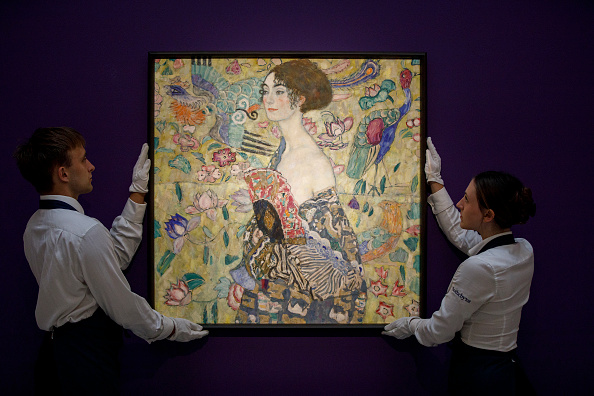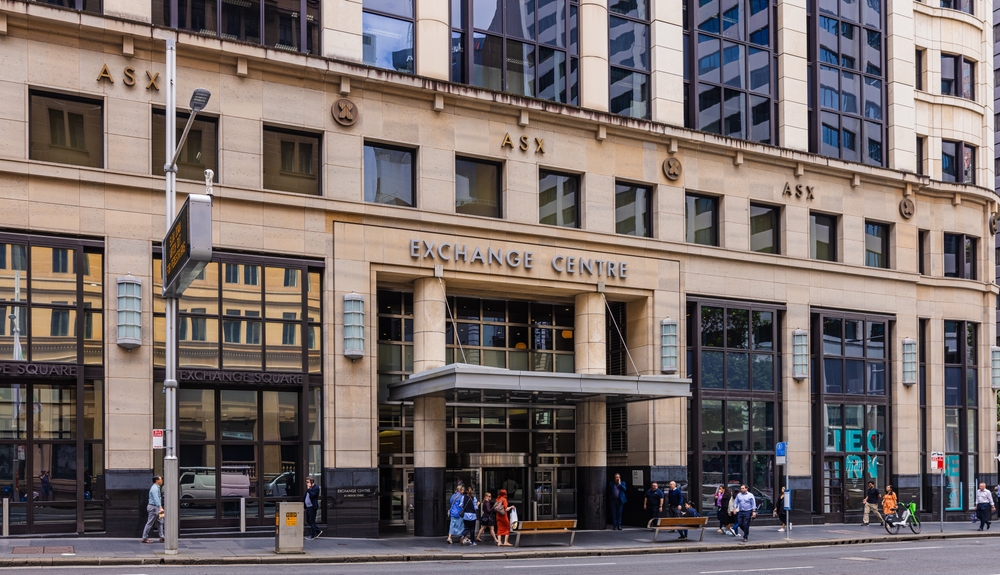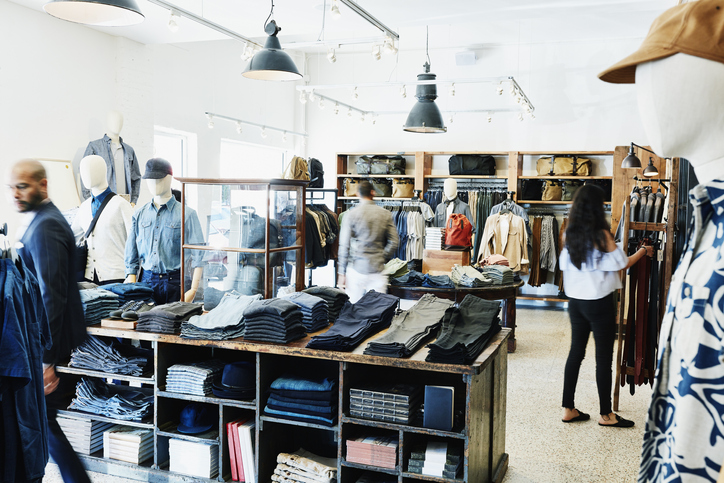Gustav Klimt’s Mysterious Nude Portrait Breaks Record with $108.4 Million Sale
‘Lady with a Fan’ was the artist’s last portrait. It was found sitting on the easel of his studio after he died.
A Gustav Klimt portrait of a mysterious nude woman clutching a hand fan and standing against a colourful wall of dragons and flowers sold Tuesday for $108.4 million at Sotheby’s London, setting a record for any artwork auctioned in Europe.
The 1917-1918 “Lady with a Fan” surpassed both of Europe’s previous titleholders, including the $104 million paid by billionaire Lily Safra in 2010 for Alberto Giacometti’s spindly bronze sculpture, “Walking Man I,” and the $80.4 million painting record previously set in 2008 by Claude Monet’s 1919 canvas, “Water Lily Pond.”
“Lady with a Fan” also topped the $104.6 million paid for the artist’s 1903 landscape, “Birch Forest,” which was bought by an anonymous buyer last year.
The identity of the woman holding the fan remains a mystery, but she likely stood out because the canvas is considered the artist’s final portrait. The work was found sitting on the easel of his studio when he died at age 55 in 1918.
Sotheby’s only expected “Lady with a Fan” to sell for around $80 million, but four bidders pushed it far higher. Adviser Patti Wong won the work following a 10-minute bidding war for one of her clients in Hong Kong, she confirmed after the sale.
The painting fell shy of breaking the artist’s overall record, which cosmetics executive Ronald Lauder set in 2006 when he paid $135 million for Klimt’s restituted “Portrait of Adele Bloch-Bauer I,” a shimmering portrait of a woman surrounded by golden-flecked patterns. That restituted painting, which became the subject of a 2015 film, “Woman in Gold,” is now displayed at New York’s Neue Galerie.
The Austrian symbolist was best known for his sensual portraits of lanky, glamorous women whose postures or modern attire marked a departure from the stiffer, salon-style portraits of women that preceded him. His 1907-08 masterpiece, “The Kiss,” depicts an embracing couple dressed in a riot of patterned fabric. It hangs in Vienna’s Belvedere museum.
Few of his portraits still circulate in today’s marketplace, which likely added to the appeal of “Lady with a Fan.”
The “lady” depicted in the work remains anonymous. Curators surmise she was a model he hired for the job, rather than an Austrian socialite like Bloch-Bauer, because the woman depicted agreed to pose in the nude, her figure obscured by an off-shoulder kimono and hand fan.
It’s also unclear if the swirl of lotus flowers and birds behind her represent a tapestry, wallpaper or Klimt’s own imagined pattern; the artist was known to admire Japanese motifs.
The sale may go a long way toward underscoring the resilience of the trophy art market despite the fresh shakiness of the art market overall. Klimt remains one of a handful of artists who tend to command top prices in good markets and bad, dealers said. Last month, Klimt’s watery scene, “Insel im Attersee,” sold for $53.2 million to a Japanese collector.
 Copyright 2020, Dow Jones & Company, Inc. All Rights Reserved Worldwide. LEARN MORE
Copyright 2020, Dow Jones & Company, Inc. All Rights Reserved Worldwide. LEARN MORE
This stylish family home combines a classic palette and finishes with a flexible floorplan
Just 55 minutes from Sydney, make this your creative getaway located in the majestic Hawkesbury region.
Continued stagflation and cost of living pressures are causing couples to think twice about starting a family, new data has revealed, with long term impacts expected
Australia is in the midst of a ‘baby recession’ with preliminary estimates showing the number of births in 2023 fell by more than four percent to the lowest level since 2006, according to KPMG. The consultancy firm says this reflects the impact of cost-of-living pressures on the feasibility of younger Australians starting a family.
KPMG estimates that 289,100 babies were born in 2023. This compares to 300,684 babies in 2022 and 309,996 in 2021, according to the Australian Bureau of Statistics (ABS). KPMG urban economist Terry Rawnsley said weak economic growth often leads to a reduced number of births. In 2023, ABS data shows gross domestic product (GDP) fell to 1.5 percent. Despite the population growing by 2.5 percent in 2023, GDP on a per capita basis went into negative territory, down one percent over the 12 months.
“Birth rates provide insight into long-term population growth as well as the current confidence of Australian families,” said Mr Rawnsley. “We haven’t seen such a sharp drop in births in Australia since the period of economic stagflation in the 1970s, which coincided with the initial widespread adoption of the contraceptive pill.”
Mr Rawnsley said many Australian couples delayed starting a family while the pandemic played out in 2020. The number of births fell from 305,832 in 2019 to 294,369 in 2020. Then in 2021, strong employment and vast amounts of stimulus money, along with high household savings due to lockdowns, gave couples better financial means to have a baby. This led to a rebound in births.
However, the re-opening of the global economy in 2022 led to soaring inflation. By the start of 2023, the Australian consumer price index (CPI) had risen to its highest level since 1990 at 7.8 percent per annum. By that stage, the Reserve Bank had already commenced an aggressive rate-hiking strategy to fight inflation and had raised the cash rate every month between May and December 2022.
Five more rate hikes during 2023 put further pressure on couples with mortgages and put the brakes on family formation. “This combination of the pandemic and rapid economic changes explains the spike and subsequent sharp decline in birth rates we have observed over the past four years,” Mr Rawnsley said.
The impact of high costs of living on couples’ decision to have a baby is highlighted in births data for the capital cities. KPMG estimates there were 60,860 births in Sydney in 2023, down 8.6 percent from 2019. There were 56,270 births in Melbourne, down 7.3 percent. In Perth, there were 25,020 births, down 6 percent, while in Brisbane there were 30,250 births, down 4.3 percent. Canberra was the only capital city where there was no fall in the number of births in 2023 compared to 2019.
“CPI growth in Canberra has been slightly subdued compared to that in other major cities, and the economic outlook has remained strong,” Mr Rawnsley said. “This means families have not been hurting as much as those in other capital cities, and in turn, we’ve seen a stabilisation of births in the ACT.”
This stylish family home combines a classic palette and finishes with a flexible floorplan
Just 55 minutes from Sydney, make this your creative getaway located in the majestic Hawkesbury region.






















